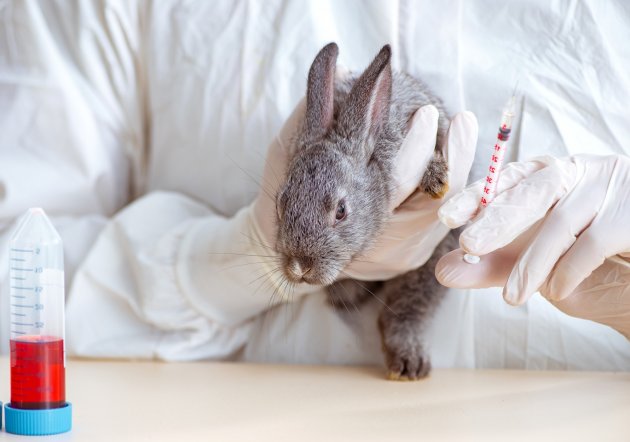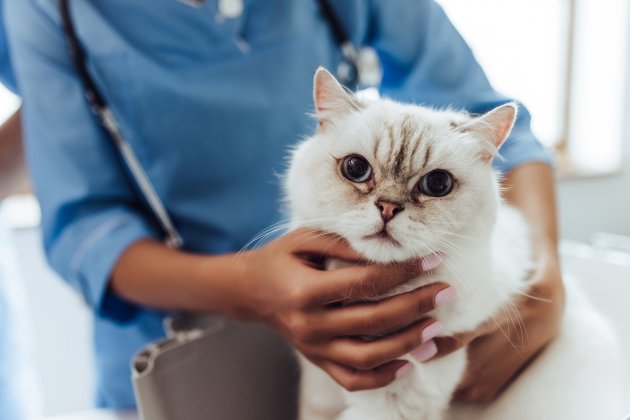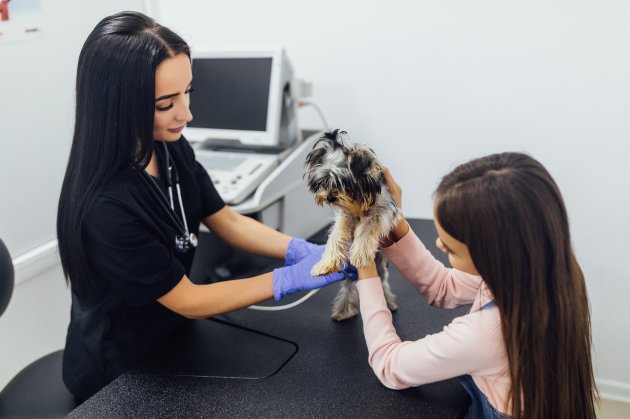Being a vet is my dream job; it’s like air to me and runs through to my very soul. However, it can be a frustrating job. Not least, because a minority of pet parents unwittingly hinder, rather than help, the care of their pet.
Here are seven of my pet peeves that make it harder to do the best job for the patient in my care. This isn’t intended as whinge, but help people understand how to get the most out of their pet’s visit to the vet.
#1: Cellphone Etiquette
In my view the animal on the table is top priority and more important than checking social media, taking calls, or browsing the internet. However, far too many clients do just this…whilst in consult.
Indeed, some people act like they have one arm because they won’t put the phone down. Only last week, one pet parent with an anxious dog rather than cradle their pet, held their collar too tight half-throttling them. The problem being the phone glued to the other hand.
I’ve even seen children begging parents to put their phone down, because even they can see Mom isn’t paying proper attention to a precious pet. And owners even leave consult completely, with the animal still on the table, because they want to take a call.
Put the phone on silent and put it away. Stay in the moment with the pet in front of you.

#2: Not Controlling Kids
Yes, we want children to learn responsibility and be involved with pet care. But no, this doesn’t mean letting run feral in the waiting area or consult room. It happens.
The waiting area is not a playground. Super-excited kids running up to other people’s pets can be deeply distressing for that animal at an already stressful time.
Then in consult it is not acceptable for children to explore the surgery, picking up equipment, or trying to sit on the consult table. Let’s be clear, clinics contain sharp objects that are not intended as toys. If parents won’t take control of their children, then the vet has to divide their attention between their patient and the child, to keep the latter safe. It’s an unneeded distraction.
Allow the vet to concentrate on the patient and keep children safe, by keeping kids under control.
#3: Poor Time Keeping
An appointment time is NOT a guide as to what time to turn up, it’s a commitment. Yes, things happen and everyone runs late from time to time. That’s fine, especially when the client phones ahead to explain. But what’s not fine is rolling in half an hour after the allotted appointment and expecting to be fitted in next.
Vets want to give each patient their full time and attention. How can this work if two people both expect to be seen in the same slot? This is effectively what happens when someone is late.
Plan ahead so you arrive on time. If through unavoidable circumstances you are late, then be prepared to be patient and wait. Not to do so effectively says your pet is more important than someone else’s, which isn’t fair.

#4: Crying Wolf
This is a tricky one, because it’s a particular kind of “Crying wolf”, rather than the concerned pet parent being genuinely worried about their pet. With the latter, if the pet arrives and isn’t sick, then that’s just fine, we’re all pleased it was nothing to worry about. No problem.
What I’m referring to is the client who cries wolf in order to get squeezed into a rammed clinic, because it’s convenient to them.
These clients knowingly and deliberately exaggerate their pet’s symptoms, in order to be squeezed in as an emergency. Then on arrival it transpires the pet perked up on the way down, but they’d still like the animal seen as this is the only time the owner can make it.
Staff don’t say a clinic is full for the fun of it. As well as a full list of patients waiting to be seen the vet will have operations and visits to do after consults. If you are aware a problem isn’t urgent, then don’t exaggerate just to get seen. It may impact on the care given to other people’s pets that are sicker than yours.
#5: Vague Problem Lists
You booked the appointment because something concerned you about the pet. Please prioritize the problems and start with the most significant first. Too many times, people concentrate in great detail on the least important issue and on only mention what’s really bothering them as they head OUT the door.
Likewise, be focussed with the pet’s history and symptoms. When the vet asks “When did the cough start?” don’t be the person who responds, “Well, it was just before my niece came back from vacation. She had an amazing time and when she came over to show me the photos, she did happen to mention that she’d not heard Bonzo coughing before…”
Get the picture! Two minutes later and the vet is none the wiser about the cough, but does have a great idea for their next vacation.
Write a list of the pet’s problems and go through it with the vet before they examine the animal.
Give specific answers rather than ramble.

#6: Be Realistic about the Pet’s Temperament
Recently, I had my life flash before my eyes as a Rottweiler launched itself at my throat, teeth barred. The thing was, I’d even asked the owner what the dog was like to handle. Their reply was “Fine.” Uh-oh, I disagree.
Vets adapt how they handle animals to their temperament. Getting the most out of a physical exam means the vet being on their best game. This can’t happen if you’re working blindfold as to the pet’s true temperament.
The vet isn’t going to refuse to see a snappy or aggressive animal. They just need to be forewarned to keep everyone safe. Likewise, a stressed cat is more liable to lash out. If you avoid your cat’s claws under certain circumstances at home, the chances are the vet needs to know. It’s simply not acceptable to let the cat draw blood and then say “Oh, we do have to be careful sometimes.”
Please forewarn staff if the pet is anxious and liable to act unpredictably.
#7: A ‘Can Do’ Attitude
Vets are human and not miracle workers, and they need the owner’s co-operation to get the pet better. Take the example of a cat that soils in the house but shares one tray with three other cats. It’s a no-brainer. Each cat needs their own tray. And yet, some people think if they refuse to adapt, the vet will come up with a magic injection to sort the problem without putting them to any inconvenience.
Be open-minded about the vet’s suggestions. When something isn’t practical or possible, have a discussion with the vet, rather than closing that avenue down. Remember, advice is given for the good of your pet, rather than for the vet’s whimsy.
OK, maybe this does sound a bit like a rant, but it’s not meant to be. There are heaps of great owners out there, prepared to move heaven and earth for the good of their pet. These observations are made out of frustration because caring people unthinkingly make it harder to give their pet the care they need and deserve.
Please, a plea from the heart…take not of the points above and help your pet by helping the vet to do the best job they can.